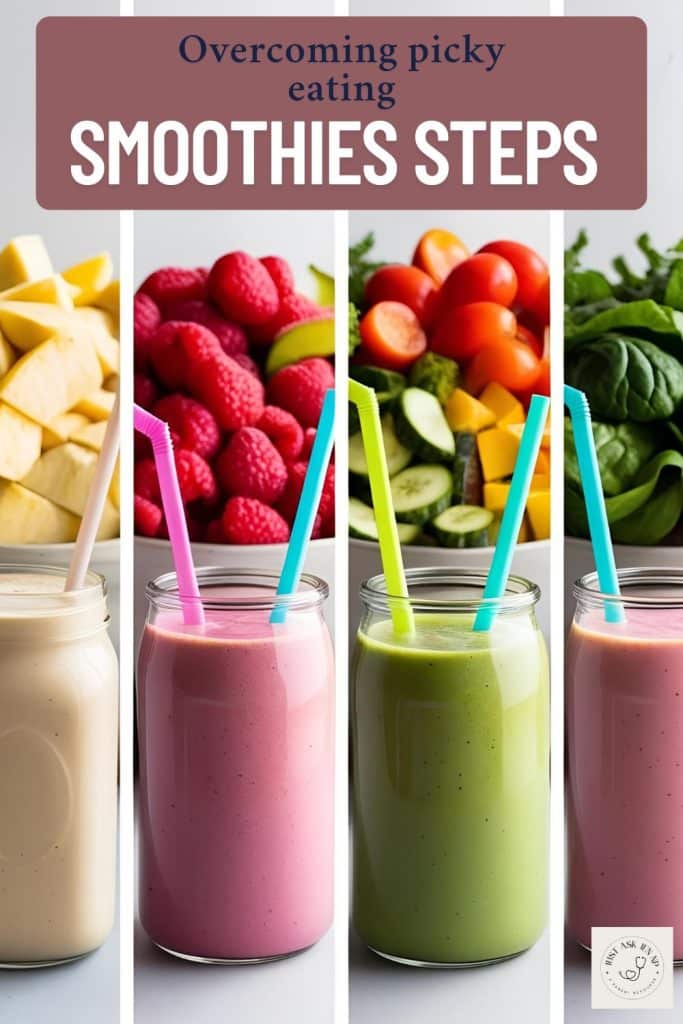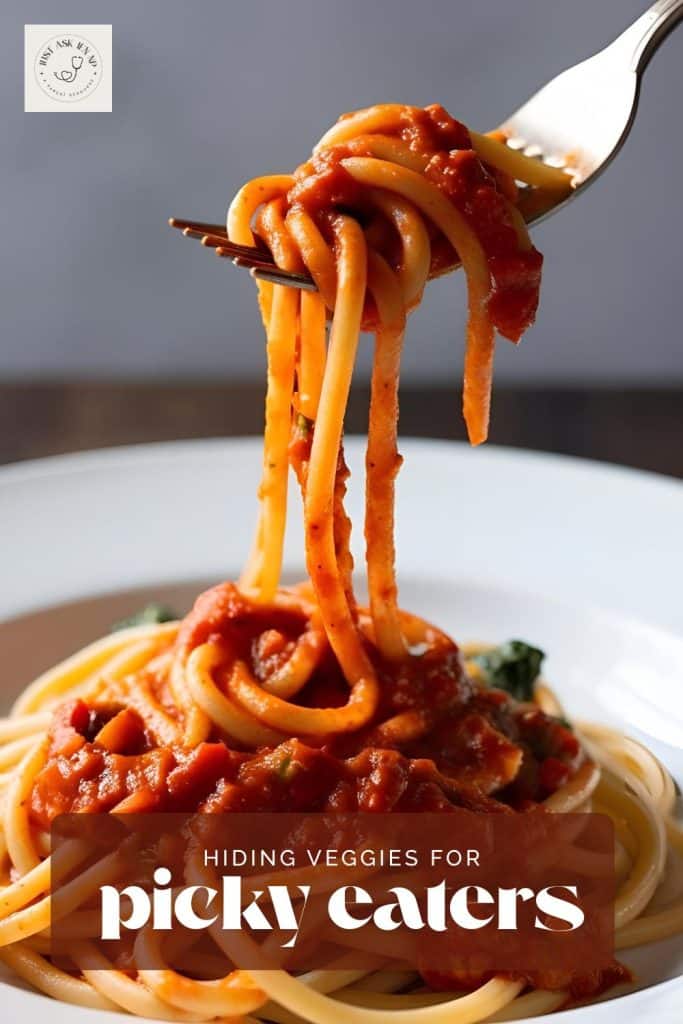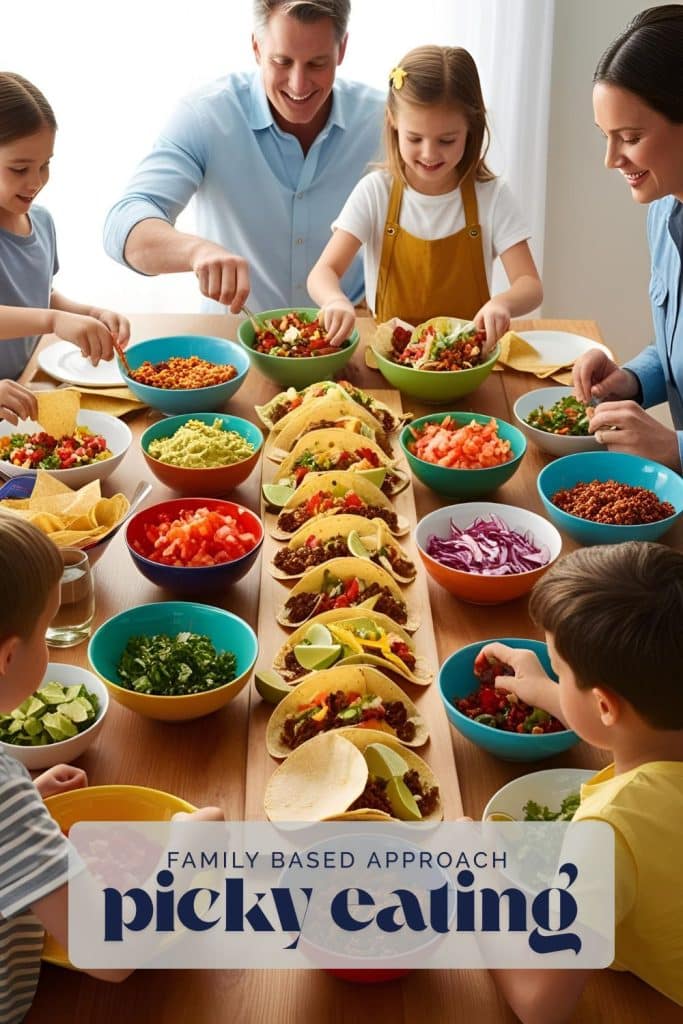Overcoming Picky Eating: A Pediatric NP’s Guide to Better Nutrition in 2025
As a pediatric nurse practitioner, one of the most common challenges I face is helping families improve their children’s nutrition —especially when those children are picky eaters.
The irony is striking: the children who would benefit most from dietary improvements are often the most resistant to change. After years of working with families, I’ve developed practical strategies that actually work in real-world settings. Check out the suggestions below for overcoming picky eating.

Understanding Picky Eating
Picky eating is a normal developmental phase that many children go through. However, when it persists or becomes extreme, it can lead to nutritional deficiencies and establish poor eating habits that carry into adulthood. Before diving into solutions, it’s important to understand that:
- Most children go through at least one phase of selective eating
- Food neophobia (fear of new foods) is biologically programmed as a protective mechanism
- Sensory sensitivities can play a significant role in food acceptance
- Pressure and negative mealtime dynamics often worsen the problem

Small Steps Lead to Big Changes
The key to success is patience and a gradual approach. Rather than attempting complete dietary overhauls, focus on incremental improvements:
- Start with tiny exposures: Research shows that it often takes 10-15 exposures before a child accepts a new food
- Use the “one bite rule”: Just one taste is required, not finishing the portion
- Celebrate small victories: Make a big deal when they try something new, even if they don’t like it initially
Recipe: Stepping Stone Smoothies
These smoothies start with familiar flavors and gradually introduce more nutritious ingredients over time.
Base Smoothie:
- 1 cup milk of choice (dairy or plant-based)
- 1 banana
- 2 tablespoons nut butter
- 1-2 teaspoons honey (optional)
- Ice cubes
Week 1 Addition: Add 1/4 cup mild-flavored fruit like mango or berries Week 2 Addition: Increase fruit to 1/2 cup and add 1/4 avocado Week 3 Addition: Keep previous ingredients and add a small handful of spinach Week 4 Addition: Add 1 tablespoon ground flaxseed or chia seeds
Instructions:
- Combine all ingredients in a blender
- Blend until smooth
- Serve immediately in a colorful cup with a fun straw

Make Nutrition Accessible and Fun
Children respond to joy and playfulness far better than nutrition lectures or pressure:
- Involve children in food preparation: Age-appropriate tasks like washing produce or measuring ingredients increase interest
- Create visually appealing plates: Use cookie cutters, arrange food in shapes or faces
- Give foods fun names: “X-ray vision carrots” or “dinosaur trees” (broccoli) can increase consumption
- Try “food chaining”: Gradually move from accepted foods to similar but more nutritious options
Recipe: Build-Your-Own Rainbow Wraps
Ingredients:
- Whole grain tortillas or wraps
- Protein options: sliced chicken, turkey, hummus, or beans
- Vegetables in rainbow colors:
- Red: bell peppers, cherry tomatoes
- Orange: grated carrots
- Yellow: corn kernels
- Green: cucumber slices, lettuce
- Purple: shredded purple cabbage
- Dipping sauce options: yogurt-based ranch, hummus, mild salsa
Instructions:
- Set up ingredients in separate bowls
- Let children choose their ingredients and build their own wrap
- Encourage trying at least one new vegetable each time
- Roll up and serve with dipping sauce on the side

Stealth Nutrition Approaches
Sometimes the direct approach isn’t best. These “stealth” strategies can help increase nutrient density:
- “Hide” vegetables: Puree them into sauces, smoothies, or meatballs
- Boost nutrient density in accepted foods: Add chia seeds to yogurt or ground flaxseed to baked goods
- Focus on naturally sweet vegetables: Carrots, sweet potatoes, and bell peppers can be entry points
Recipe: Secret Veggie Pasta Sauce
Ingredients:
- 1 tablespoon olive oil
- 1 small onion, diced
- 2 garlic cloves, minced
- 1 carrot, finely grated
- 1 small zucchini, finely grated
- 1/2 cup butternut squash, small cubes
- 1 red bell pepper, diced
- 1 can (14 oz) crushed tomatoes
- 1 teaspoon dried basil
- 1/2 teaspoon dried oregano
- Salt and pepper to taste
- 1 tablespoon tomato paste
- 1/4 cup grated parmesan cheese (optional)
Instructions:
- Heat olive oil in a pot over medium heat
- Sauté onion and garlic until fragrant
- Add all vegetables and cook until softened (about 10 minutes)
- Add crushed tomatoes, herbs, and tomato paste
- Simmer for 15-20 minutes until vegetables are very soft
- Use an immersion blender to puree until smooth
- Stir in parmesan if using
- Serve over whole grain pasta

Family-Based Approaches
The family environment significantly impacts eating behaviors:
- Model healthy eating behaviors: Children often follow what they see
- Implement regular family meals without screens: This improves both eating habits and family dynamics
- Avoid making separate “kid meals”: Offer the same foods to everyone
- Eliminate food bribes and rewards: These can reinforce negative patterns
Recipe: Family-Style Taco Bar
Ingredients:
- Protein options: ground turkey or beef seasoned with mild taco seasoning, or black beans
- Whole grain or corn tortillas
- Toppings bar:
- Shredded lettuce
- Diced tomatoes
- Grated cheese
- Diced avocado
- Plain Greek yogurt (instead of sour cream)
- Mild salsa
- Black beans
- Brown rice
- Lime wedges
Instructions:
- Prepare protein and warm tortillas
- Arrange all toppings in separate bowls
- Let family members build their own tacos
- Encourage everyone to try at least one vegetable topping
- Eat together and discuss the day’s events

Clinical Considerations for Healthcare Providers
As healthcare providers, we should take a comprehensive approach:
- Rule out sensory issues or oral motor delays: Some children may need occupational therapy referrals
- Consider a multivitamin: This can be a temporary bridge while working on diet improvements
- Screen for zinc deficiency: This can affect taste perception and appetite
- Assess for food allergies or intolerances: These may cause legitimate aversions to certain foods
Communication Strategies
How we talk about food matters tremendously for picky eating:
- Frame conversations around “growing foods” and “strong body foods”: Children respond better to this than “healthy,” which they often translate as “tastes bad”
- Provide simple, age-appropriate education: Explain how different foods help their bodies function
- Use motivational interviewing techniques: With older children, this can help them develop intrinsic motivation
Recipe: Power Packed Breakfast Cookies
Ingredients:
- 2 ripe bananas, mashed
- 1 cup rolled oats
- 1/4 cup almond or peanut butter
- 2 tablespoons honey
- 1/4 cup ground flaxseed
- 1/2 teaspoon cinnamon
- 1/4 cup dark chocolate chips
- Optional add-ins: chopped nuts, dried fruit, pumpkin seeds
Instructions:
- Preheat oven to 350°F
- Mix all ingredients in a bowl
- Drop spoonfuls onto a lined baking sheet
- Flatten slightly with the back of a spoon
- Bake for 12-15 minutes
- Cool completely before storing

Parent Education and Support
As providers, we must support parents in creating positive food environments:
- Help parents understand normal developmental stages: Knowing what’s typical can reduce anxiety
- Reduce mealtime pressure and power struggles: This often backfires
- Focus on long-term habits: Individual meals matter less than overall patterns
- Schedule regular follow-ups: Dietary changes take time and ongoing support
- Check out this link for creating healthy habits
Final Thoughts
Improving childhood nutrition is a marathon, not a sprint. With patience, creativity, and consistent effort, we can help even the pickiest eaters develop healthier relationships with food. The strategies outlined above have proven successful in my practice, but remember that each child is unique. Tailor your approach to the individual child’s preferences, sensitivities, and developmental stage.
For more information check out this link https://www.healthychildren.org/English/healthy-living/nutrition/Pages/Childhood-Nutrition.aspx
What small step will you take today to improve your pediatric patients’ nutrition?
Disclaimer: This article is for educational purposes only and should not replace individualized medical advice. Always consult with a healthcare provider before making significant changes to a child’s diet, especially for children with medical conditions.
